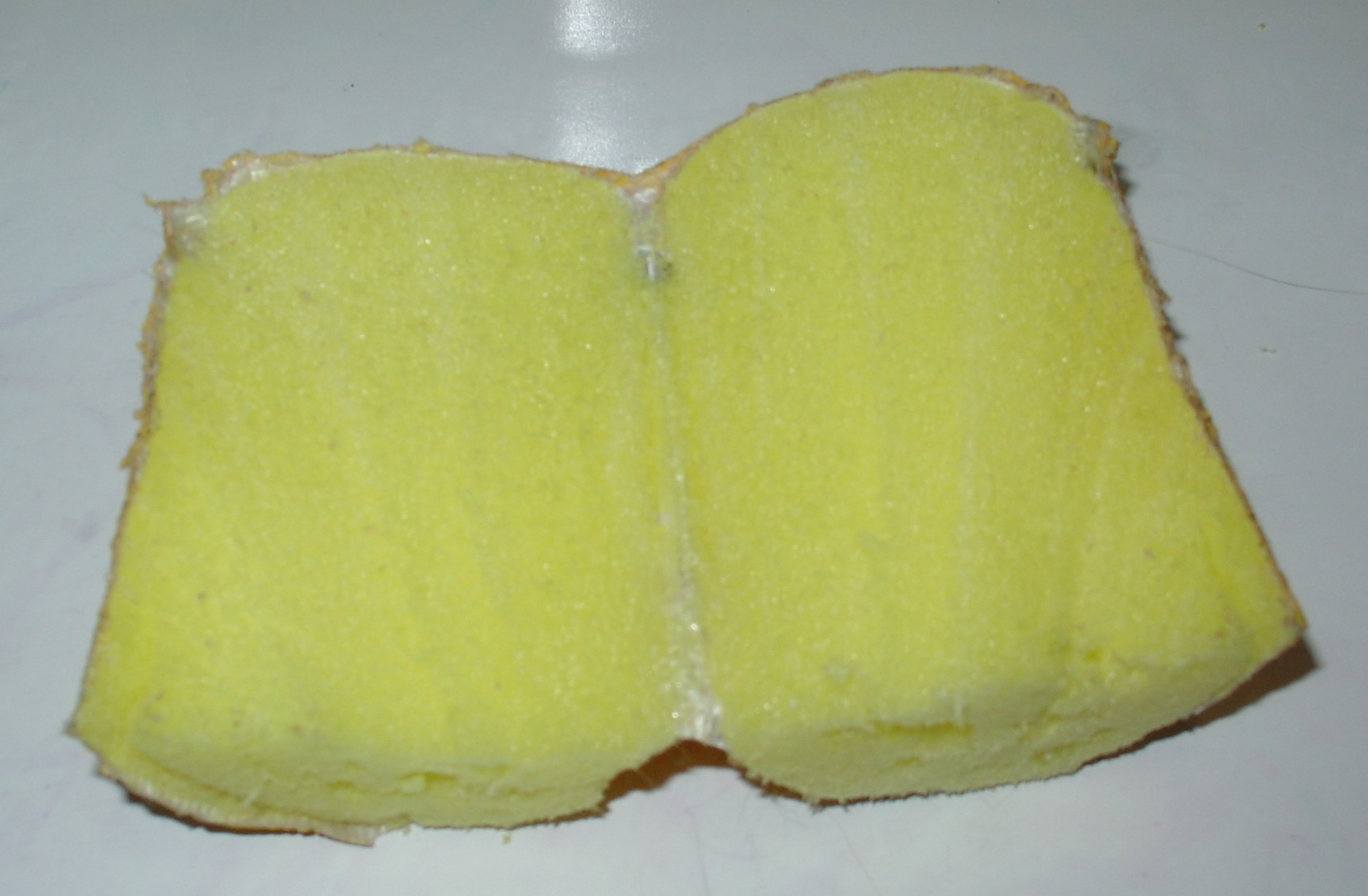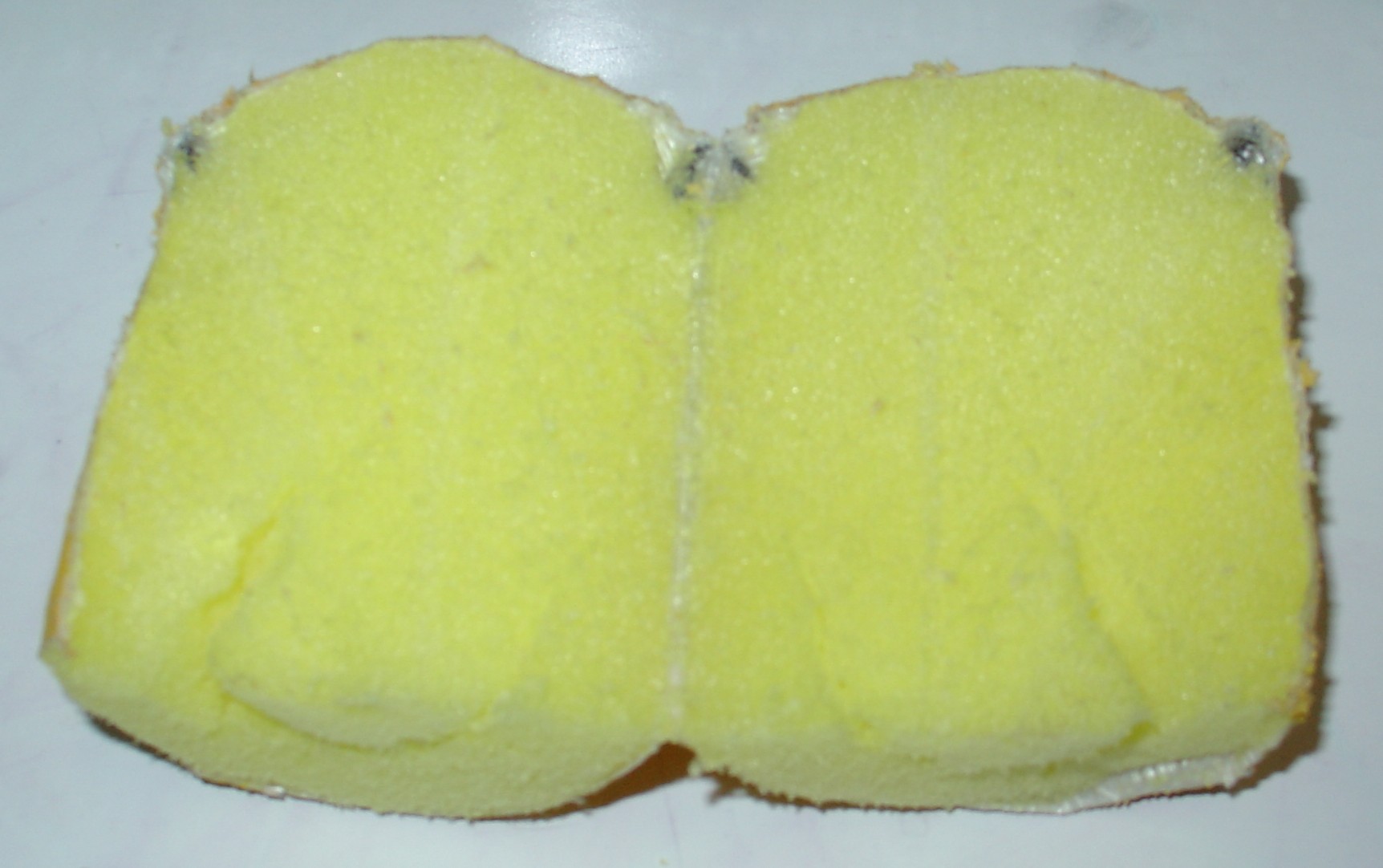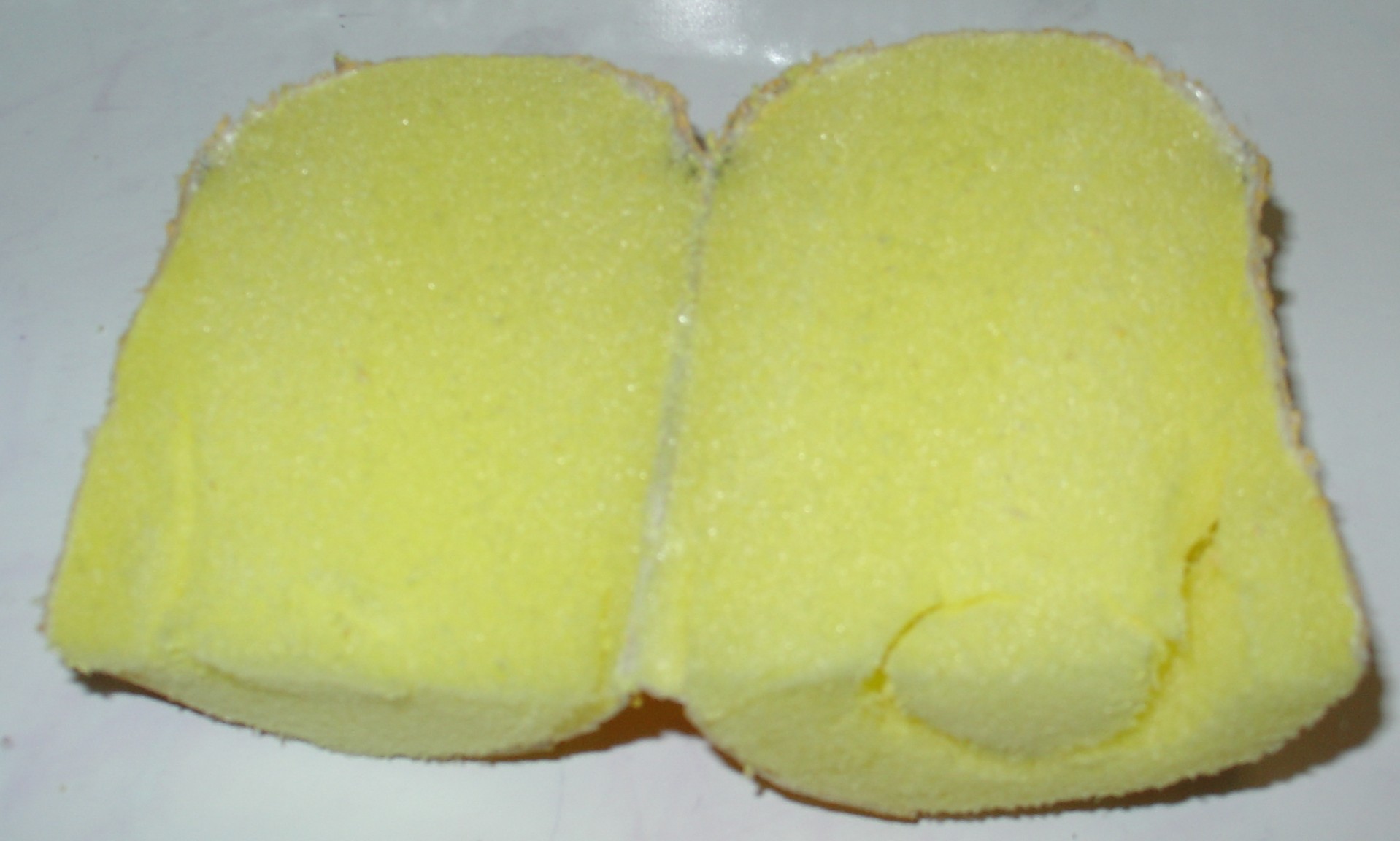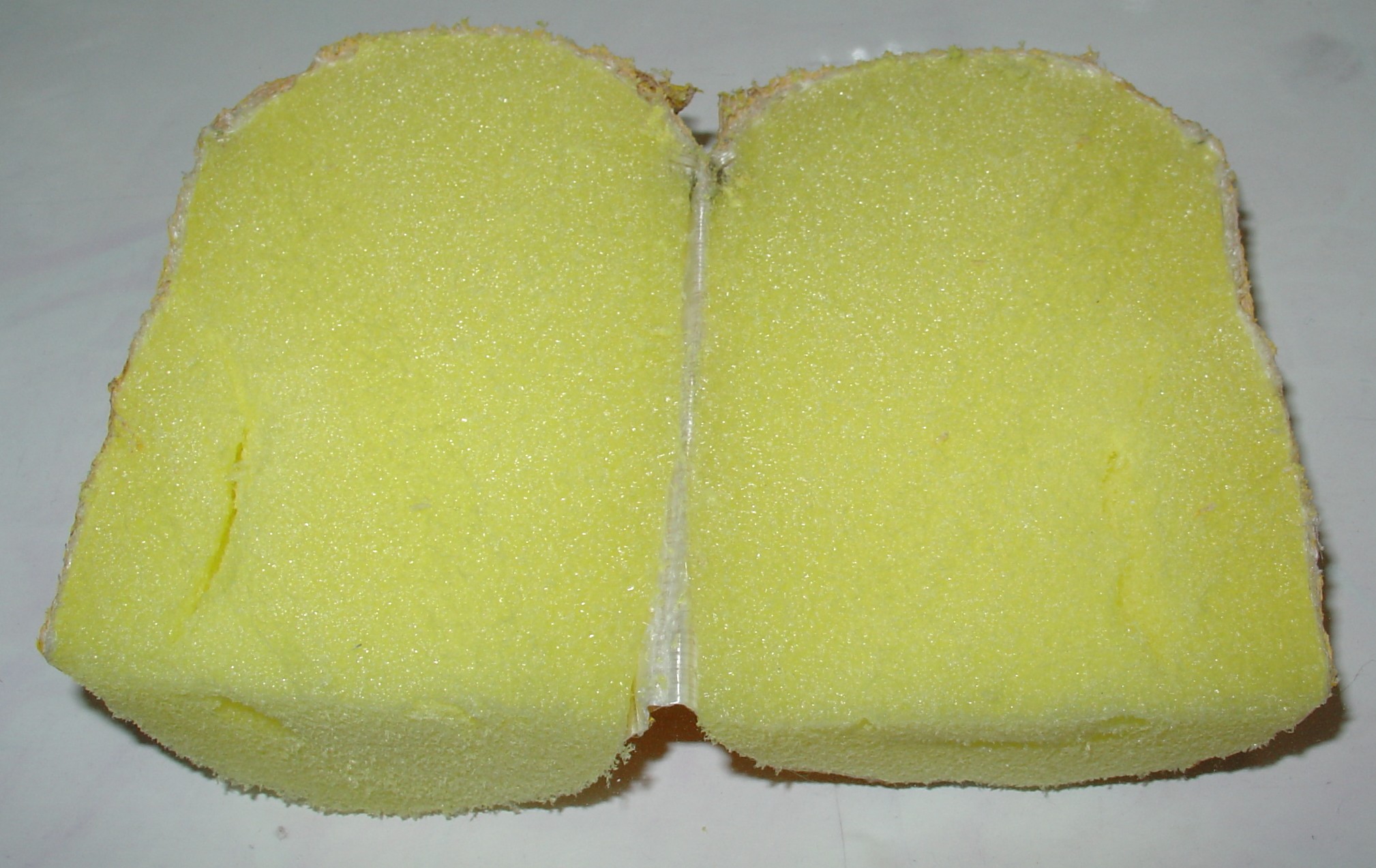| shots | 1" |
1 1/2" |
2" |
length |
| 0 |
60 |
80 |
110 |
51 1/2" |
| 5 |
50 |
65 |
90 |
51 1/4" |
| 10 |
40 |
60 |
80 |
51" |
| 15 |
40 |
50 |
-- |
50 3/4" |
After 5 shots, I noticed clear degradation by simply squeezing the outside. After 10 shots, it was almost at a failure level. After 15 shots there was no point in continuing testing this tip. The failure point was somewhere just after 10 shots. The friction tape did a good job of holding onto the tip, showing only a slight creasing at the base of the tip.
When measuring compression, I was not able to measure 2" of compression after 15 shots due to shortening of the length. It was clear that it was significantly degraded.
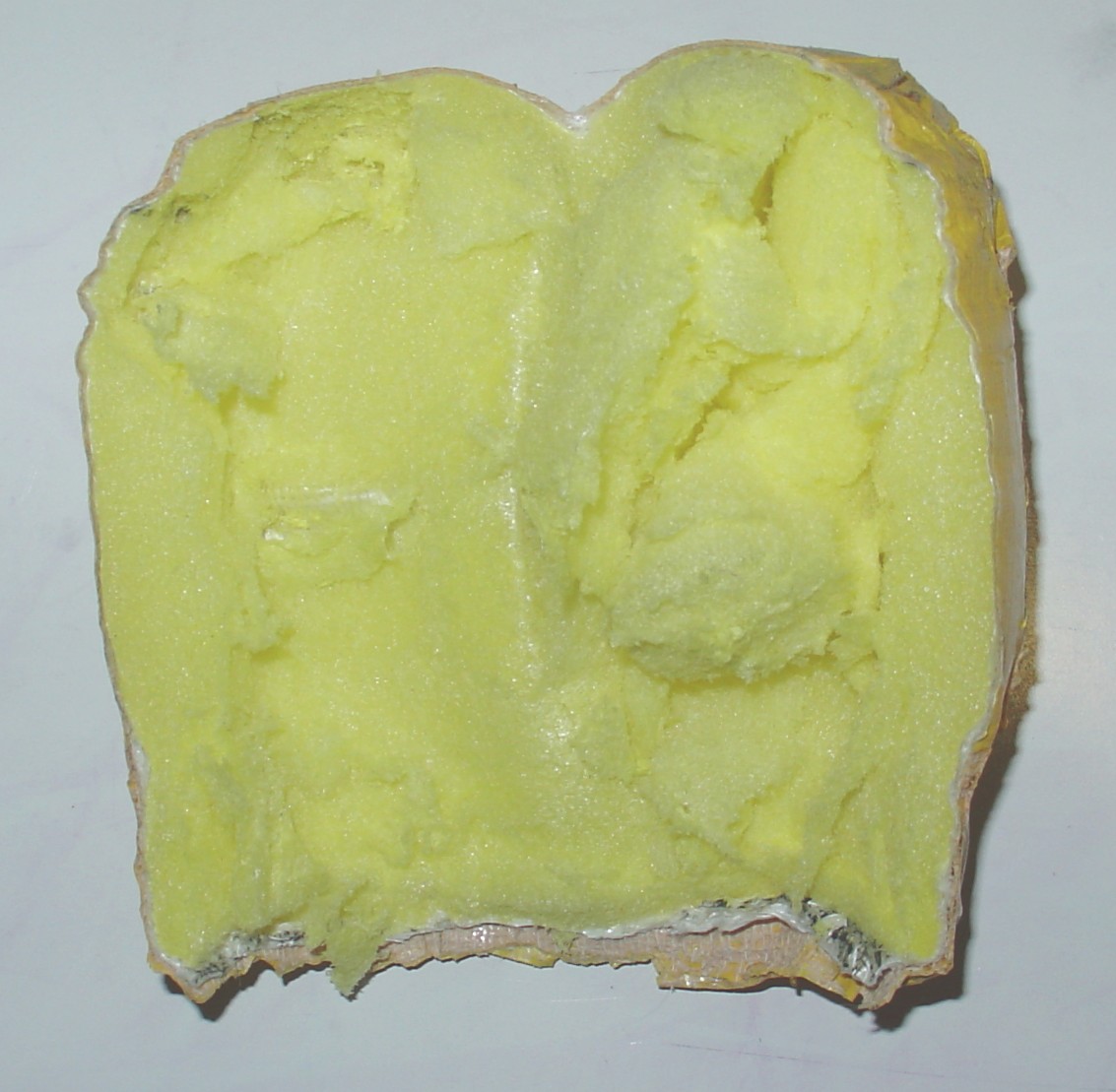
After cutting open, the interior showed significant destruction throughout the tip. The results are consistent with other testing I've done of these tips.
| shots |
1" |
1 1/2" |
2" |
length |
| 0 |
60 |
85 |
120 |
52 |
| 5 |
40 |
60 |
90 |
51 3/4 |
| 10 |
35 |
50 |
75 |
51 5/8 |
| 15 |
30 |
40 |
60 |
51 5/8 |
| 20 |
25 |
30 |
60 |
51 5/8 |
This one held up about twice as long as T1. After 10 shots I could clearly tell that it was degrading faster than the stiff collar tips. There was some notable wobble of the tip on the pipe, but this wasn't alarming. After 20 shots, side compression was getting mushy, and lengthwise compression was getting mushy. I decided to stop after 20 shots since I figured it would be beyond failure in another 5 shots. T2 lasted roughly twice as long as T1.
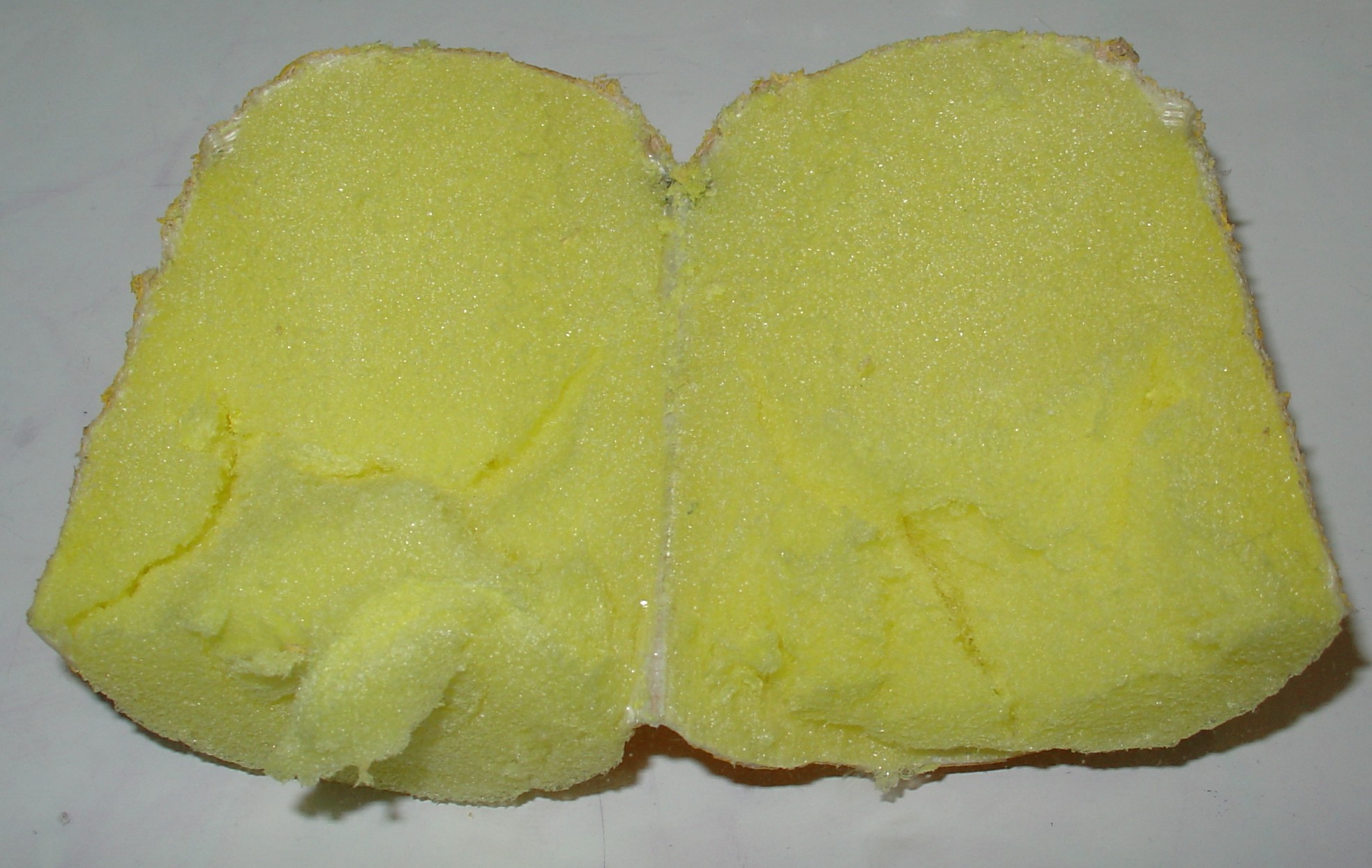
After cutting open, the interior showed some notable destruction in the lower half of the tip, but not overwhelming. The upper half is still in pretty decent shape, although some cracks in the foam extend into the upper half.
The large leather disk had clearly rounded over a bit, due to the lack of support from the pool noodle collar underneath. This explains the degradation of the pool noodle at the base.
